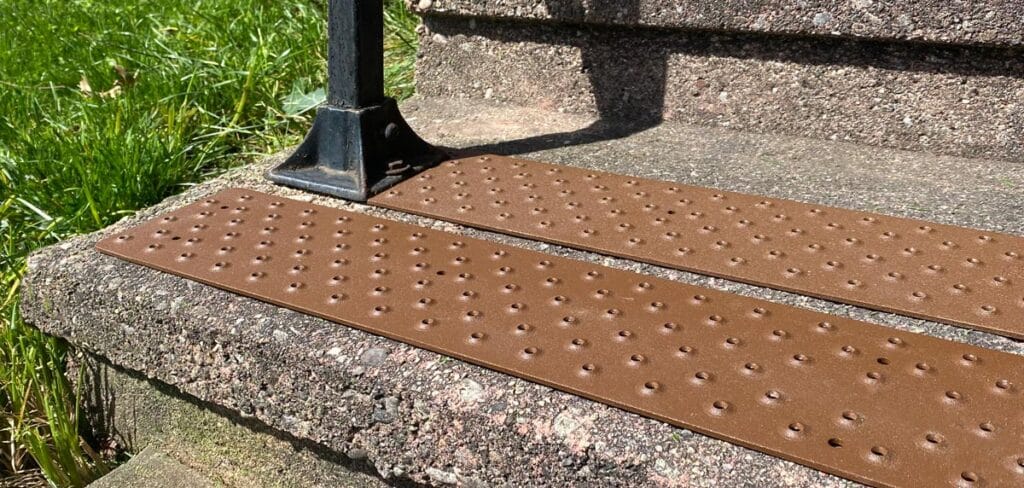

One of the most common questions we receive about HandiTreads is whether the aluminum treads can be cut to fit specific applications. The answer is (drum roll) a resounding yes! Whether you’re dealing with a unique staircase, deck, or ramp, HandiTreads can be tailored to suit your needs. In this guide, we’ll explore why cutting HandiTreads might be necessary and how you can do it effectively.






If your treads have a colored powder coating, you may want to cover the exposed aluminum edge to a little cosmetic treatment. A quick dab of similarly colored metal paint will hide the cut edge of the aluminum to all but the closest inspection. Looking for a faster solution? Grab a Sharpie in a matching color and touch up the exposed edge. It’s just that simple!
Cutting HandiTreads to fit your stairs, deck, or ramp allows for customized non-slip solutions tailored to your specific needs. Whether you’re dealing with unique dimensions or intricate designs, the versatility of HandiTreads combined with the right saw ensures a perfect fit every time. By following the guidelines outlined in this guide and choosing the appropriate tools for the job, you can create safe and secure pathways that enhance both aesthetics and functionality. Say goodbye to slip, trip, and fall hazards with HandiTreads – the ultimate solution for non-slip surfaces tailored to your requirements.